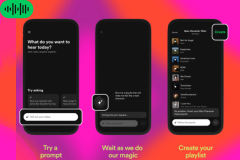Companies can no longer claim they don’t have enough data about their customers. The explosion of social media, forums, discussion boards, and even customer care services give organizations enough raw material to help them provide excellent service and create better products, well-suited for customers’ needs and preferences.
Right now, the biggest struggle is to make sense of all the data flowing toward the organization in such a way that it doesn’t flood decision-makers but helps them achieve targets consistently. Data flowing toward organizations is a job for business intelligence (BI) tools. Furthermore, the best systems can provide actionable insights almost in real-time, a thing which customers almost take for granted.
What is a business intelligence (BI) solution?
A BI tool converts data into easy-to-read, usually visual representations, which can offer decision-makers an overview of the situation with the possibility to drill down to atomic levels, to find the right answers.
A BI software offers historical, real-time, and predictive approaches to a company’s actions by looking at past recordings and computing future trends. It can be useful in various business areas, including marketing and prospecting, sales, customer care, and logistics. Most of the times, these tools also offer industry benchmarks to help companies assess their direction and growth.
Here are a few reasons why companies of all sizes should take into consideration having a BI solution.
Stay ahead of market trends.
Staying relevant in business is more about thinking about what you should do next instead of current firefighting situations. A useful business intelligence tool not only focuses on your company’s proprietary data but looks at other players in the industry and extracts the essentials.
BI consultants from InData Labs say that such a system can give warning signals about potentially dangerous upcoming events or alert to opportunities.
For example, a BI connected to Google Analytics and Twitter trends will identify if there is a rising interest in a product you have or even a complimentary item, due to various factors. If this happens, it will display a map or a message giving more insights about the requested product type and where it is needed.
Listen to your customers.
The extensive development of online communication channels between a company and its customers means that there are many ways to listen to a customer’s voice. Most people are talking about brands they like and despise all the time, and it is the organization’s responsibility to centralize all the answers so that it learns from them and improves.
Since these channels are most of the times bidirectional, customers are also looking for a reaction from the company they mention. A useful BI tool would signal the channels where your brand gets the most attention and even the sentiment which dominates the postings. If there is a crisis potential, a BI tool will let your PR team know immediately and give them time to react.
Segment and create user personas.
Listening to your customers is just the first step. Taking your business to another level means getting deeper into their mind and habits. A way to do this is to follow user experience designers create user personas. These are generalized characters complete with a description, biography, preferences, likes, and dislikes, who would be interested in your product.
By thinking about real user personas, your team will be less inclined to focus on sales targets and worry more about meeting the needs of actual consumers. Meeting the needs of the actual customer is a step further than old-school demographic and sociographic segmentation and is closer to customization and experience personalization.
Give employees the right tools.
Although business intelligence is looking at customers’ actions, it is an employee-facing tool. Having the correct data in place makes your staff feel more confident about the decisions they are making and reduces the guesswork.
A BI system reduces the learning curve dramatically for new employees as it offers visual, simple cues. It is also a way to reduce the stress associated with data reading, even by senior staff members. Since it provides real-time insights, it is also a way to speed up your internal processes and become more productive, with the opportunity to anticipate actions.
Some studies even claim that these tools can make your employees feel more engaged with their tasks. Being more engaged with tasks leads to less stressed and more proactive staff members, an overall gain for the organization.
Empower customers.
Although most of the times a BI solution is meant to be used by employees, sometimes it can be adapted to serve customers directly. Some BI modules can be customer-facing and help them manage costs, control resources, and have a better experience overall.
If customers have portals where they can control what they pay for, it makes them feel empowered, and the employee becomes less likely to churn when thinking that they have a say in the process.
App is just another name for business intelligence (BI).
If business intelligence sounds too corporate, maybe the idea of an app is much more approachable. For example, back in 2014, McDonald’s created a pioneering app for customers that tracked behavior and offered discount vouchers. It’s easy to use the highly visual interface was a success in the Dutch market and is an inspiring story about how a BI can be translated to work directly with customers.
Conclusion
These are just a few ways BI can help organizations get closer to their customers, provide them with excellent service and value. Other applications of BI include warehouse management, logistics management, using big data to anticipate trends, and more.
These tools are not for just one industry; they can be useful in healthcare, financial services, marketing agencies, insurance, and of course, retail.










